MELROSE HOUSE - THE MASTER BEDROOM
- Steven Anderton

- Jun 27, 2020
- 10 min read
For the third installment in my Melrose House mini-series, it's bedroom talk...now get your minds out of the gutter, I simply mean talking about bedroom design.
The master bedroom was one of the rooms I fell in love with as soon as I viewed the property, a large proportioned rectangular room with two 6 ft windows flooding the room with light. Like the rest of the apartment, the room benefited from gorgeous 10 ft high ceilings, making the room free spacious and airy.

Similar to the other rooms within the apartment, the master bedroom was a blank canvas just waiting for my imagination to be unleashed. Bright white walls and the generic grey carpet just weren't going to cut the mustard.
THE DESIGN
I wanted the master bedroom to be a sanctuary; somewhere peaceful with minimal clutter. I decided quite early on that I didn't want any clothing storage pieces in the room (wardrobes or chest of drawers etc) so the second bedroom was to become the dressing room.
No bedroom will be peaceful if it is messy: design your room so that everything has its place. Kelly Hoppen
Many people questioned that maybe I should use the second bedroom as a guest room rather than creating a dressing area. I was reluctant for a room to be wasted on the very rare occasion that I had guests staying overnight, I wouldn't be using the rooms in my home to my way of living. In apartment living, space is somewhat limited and for me, a dedicated dressing space was of more importance than a spare bed gathering dust.
Once I'd figured out how I wanted to use the room, it was onto the fun part of creating its design and making sure it was in-keeping with the rest of the apartment by reflecting the buildings Victorian past.
During the Victorian era, especially the latter part, travel to the Orient was becoming increasingly popular for the upper class society, particularly to Japan, China and India. With the British Empire in full swing, influences from around the globe were starting to infiltrate back to life in Blighty.
A major contributor to these Eastern influences was the 'Great Exhibition of 1851', a giant trade fair built in London's Hyde Park under the guidance of Queen Victoria's husband, Prince Albert.

Unbelievably even by today's construction standards, the enormous iron and glass structure was purpose built and covered 19 acres of Hyde Park. In just five months the exhibit was visited by over six million people; a third of the British population at the time.
The exhibits included almost every marvel of the Victorian age, including pottery, porcelain, ironwork, furniture, perfumes, pianos, firearms, fabrics, steam hammers, hydraulic presses and even the odd house or two. Ben Johnson - Historic UK
Britain used the event to show off to the world their huge Empire and showcase them as the leaders in culture, art, industry and technology. Over half of the 100,000 objects on display were from Britain or the British Empire...show offs!
Other nations from around the globe were also invited to the exhibition to celebrate their culture and for the first time the influences from around the globe, especially the East, were seen by the British public.

Not long after this, fashion trends for interior design started to lean towards Oriental references. Furniture made from real or imitation bamboo, folding screens and wicker furniture made from woven Rattan were becoming extremely popular.
One of the most influential furniture designers around this time was Lamb of Manchester who adopted these Eastern styles into his pieces. He produced Cabinet (No. 299) and was celebrated as one of the main contributors to the Aesthetic Movement along with famous poets and artists such as Oscar Wilde.

I wanted to incorporate such a significant part of Victorian interior design with this Oriental/New World influence with the master bedroom, but do this with a little modern twist.

THE WALLS & FLOOR
When it came to what I envisioned for the walls, I toyed with the idea of dramatic wallpaper, fabrics and several paint ideas. Deep bold dramatic colours were popular with the Victorian's and I personally love the use of colour in period interiors. I felt the apartment could handle some strong shades but I was conscious that the hall was painted wall to ceiling in dark blue along with the bathroom in emerald green tiles. I didn't want the whole apartment to feel dark, confined or too overpowering.
Victorian style at a glance incorporated...rich dark colours such as ruby red, forest green, and dark blue The National Trust
I loved the idea of using the 'ruby red' shade popular with the Victorians' but for me a bedroom should be a relaxing and calming environment. I felt covering the whole walls in such a vivid colour may give me nightmares more than sweet dreams.
Dado rails (although more associated with the Georgian period) were common place in homes of the era, thought to have been originally designed to stop dining chairs from damaging the walls. I thought, why not use this theory but with a more modern approach and paint an imaginary dado rail with a dark shade to the bottom and a lighter shade to the top?
I turned to the trusty folks at Farrow and Ball with their Brinjal paint for the bottom section, a dark aubergine shade apposed to the harsh, almost theatre like, ruby red. I wanted the same colour painted along the skirting boards too, this helped to blur the harsh lines of where the walls met the floor. The finished effect creates the feeling of space, emphasises the height of the ceilings and ultimately gives a more cohesive look.
To compliment the dark shade and take advantage of the rooms bright aspect due to the large windows, I selected Farrow and Ball's Skimming Stone. This off white shade has a hint of grey and compliments the tones within the Brinjal.
I am personally useless with a paintbrush so there was no way I could be trusted to do a decent job with this. Using a laser level, my painters were able to create a perfect crisp line; the Skimming Stone paint colour was applied to the top section of the walls, the ceiling, window sills and also the traditional ceiling roses I had re-installed.

To finish the look I asked the painters to continue the line of the "dado rail" across the door and the architraves. Often doors are overlooked and usually just painted in one solid colour, usually white. I wanted the door to almost look like it had disappeared, continuing the line of the paintwork, creating a feeling of space and cohesion.

With regards to the flooring, like previously mentioned in a past blog article in this series, solid wood engineered oak parquet flooring by V4 Wood Flooring was installed throughout the apartment.
THE FURNISHINGS
This is where the real fun starts for me and probably most people to be fair. Once the basics of the walls and the floor are sorted, it's time to concentrate on the furnishings for the room.
The Eastern influence was a look I wanted to try and translate into the master bedroom. Being lucky enough to have traveled to several destinations throughout India, mainland China, Hong Kong and Japan, I have over the years, gained a little love affair for the cultural styles of these regions.
With furnishings, I wanted to replicate the 'British Colonial' style reminiscent of places like Hong Kong and Singapore from the reining days of the British Empire.
Anyone who's a regular reader of my blogs will know that countless times on my travels, it has taken me to some of the world's most impressive interiors. The iconic Peninsula Hong Kong is no exception and is one of the finest examples of 'British Colonial' style and a big influence for my own designs; albeit on a less grand scale. I wanted to achieve the look and feel but in a minimal, fuss-free fashion.
A major focal point of 'British Colonial' style was the use of lush green palms and exotic plants. I wanted to emulate this beautiful greenery with the fabric for the bed frame. I settled on the Narla bed frame; a classic winged style bed with a fan shaped headboard and wooden legs finished in dark walnut. To resemble the "lush" tropical foliage and create a real contrast to the Brinjal wall paint, the bed was upholstered in moss green velvet.

I came across two bedside tables whilst trawling antiques for hours on Pamono that I knew straight away were exactly what I was looking for. Two gorgeous Art Deco nightstands handmade in Italy (shipped to me straight from Milan) and made from walnut and burr in 1920. These beautiful and intricate pieces came complete with their original handles...perfection!
Another gem of a find was the 'Schaukelstuhl' chair by Gebruder Thonet which I stumbled across at a local antiques fair. An iconic piece of design from the Victorian era, this wooden rocking chair was designed by the Thornet Brothers who created beautiful furniture made with steam to enable the wood to bend into curves, revolutionary for the time.
With no wardrobes or storage within the room, I did feel that the room would feel empty and a little stark with just a bed. I fell in love with an antique bureau finished in matt black and walnut restored by Ethan & Grace's. The elegant cabinet in a 'Queen Anne' style, was just the piece to display my collection of delicate ornaments that I'd inherited from my Grandma from her worldly travels. I liked how in a simplistic manner, it had influences of the Lamb of Manchester Cabinet (No.299) which I mentioned earlier.
It was also the perfect piece to display my vintage Imperial typewriter from 1908. For me, it represents the writers of the day like Rudyard Kipling who enabled Victorians' to fantasise about the new worlds that were emerging in the growing Empire and the perfect accessory for the bureau.

To complement the look, I added a full length, floor standing mirror by Cox and Cox made from light oak. Not only is it beautifully crafted but it enables light to be reflected around the room.
Adding natural texture in the form of a large woven rug, handmade in India, gave contrast with the wooden floor plus it added grandeur to the bed by highlighting the focal point of the room.

I love plants and flowers in interior design, to me they bring life to a room. Lush tropical plants were a key feature in the 'British Colonial' style I was looking to achieve. I managed to source a large 5.5 ft Strelitzia reginae, more commonly known as a 'Bird of Paradise', from The Plant Shop. I complemented this with a Calathea and various succulent plants on the bedside tables along with a faux arrangement by Moth for the bureau; emulating the Japanese art of Ikebana.
In ikebana, the Japanese art of flower arranging, blossoms, branches, leaves, and stems find new life as materials for art-making. In contrast to the western habits of casually placing flowers in a vase, ikebana aims to bring out the inner qualities of flowers and other live materials and express emotion. Natalie Cenci
Along with adding white wooden Venetian blinds to the windows and column style radiators to the room, the final part of the furnishings came in the form of vintage parasols. I had managed to pick three of these delicate oil-paper parasols up from my regular visits to The Vintage Home Show, all of varying designs and size.
Parasols are believed to have first originated in China over two thousand years ago, quickly spreading to other regions in the Far East such as Japan and Korea. Often given as wedding gifts, they are supposed to help ward off bad luck whilst their round nature is considered to be a symbol of reunion. The word "round" or "circle" (yuan) in Chinese also carries the meaning of "getting together."
The beautiful illustrations on the parasols make them an art piece in their own right and I wanted to display them as such. Once the parasols were fully open, I was able to saw off the majority of the handle, thus enabling them to be hung onto the wall.

THE LIGHTING
Finally, the lighting was the last piece of the jigsaw for the master bedroom. As you regulars will know, I get a little obsessed when it comes to lighting. Where I envisioned the position of the bed to be in the room, the developers hadn't installed any electrical sockets. I asked GM Electrical to install two antique brass double plug sockets with USB connections (we all know how annoying it is in hotels with no bedside phone charging facility) either side of where the bed would be positioned.
Once these sockets were installed, it enabled me to source two dramatic table lamps to frame the bed. The height of the lamps was my main priority in the search, they needed to be higher than the headboard, my theory; to draw more attention to the main focal area of the room.
I'd come across some stunning hand-made lamp shades by Tin Design featuring Frida Kahlo; the famous Mexican painter known for her iconic self portraits. The design incorporated beautiful lush tropical flowers with images depicting Frida and the Mexican tradition of 'Día de Muertos' or 'Day of the Dead'

You might now be thinking, Mexico isn't in the Far East, but stick with me here. Victorian Britain was becoming increasingly fascinated by Latin America, much of which came from the influence of the "informal empire" that Britain had with Mexico after the Spanish American War of 1898.
Britain established an "informal empire" in Mexico and Central America, one that was characterized more by desire for the acquisition and control of objects than the possession of territory... Informal Empire: Mexico and Central America in Victorian Literature - Robert D. Aguirre
To complement the tall shades, I chose two over-sized emerald green painted glass lamp bases from John Lewis, making the table lamp a total height of 105 cm. These funky bold lamps helped add a modern twist, giving a real pop of vibrant colour and a touch of fun to the room.
With interior design I like to mix the old with the new, so for the bureau I chose to use one of my all time favourite design pieces (and designers) the Arne Jacobson AJ Table Lamp. The AJ table lamp is a sleek simple piece, designed for the iconic SAS Royal Hotel in Copenhagen in 1957 and to this day, it remains a design classic.
To take advantage of the 10 ft high ceilings, I wanted to source some eye-catching hanging pendant lights. I searched for weeks trying to find exactly what I had in my mind... birdcages. No I hadn't lost my mind, but on several visits to markets in China I often noticed ornate, beautiful birdcages and often thought how they would make a stunning statement piece to a space.
Eventually I stumbled across a company in The Netherlands called Fine Asian Living. They specialise in contemporary Asian design sourced from the Far East, unique and handmade, they had the perfect bamboo hanging pendant lights, reminiscent of the birdcages I'd seen on my travels.

The spherical shape of the pendants echoed that of the parasols and gave contrast and a softening to the strong horizontal colour line of the wall paint. The hanging lights featured intricate details on the bottom similar to those of the ferrule (peak) of the parasols, mirroring the two bold features.
The pendants, like the majority of the lights installed in the apartment, were installed on antique brass dimmer switches, enabling different lighting moods to be used throughout the day.
And that my friends is the master bedroom complete; a little oriental oasis in a Manchester suburb!
GALLERY
Why not check out the other blogs in the series about my transformation of Melrose House:









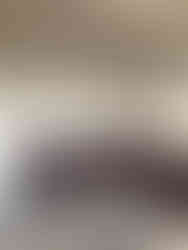







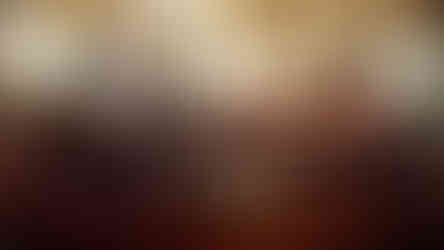



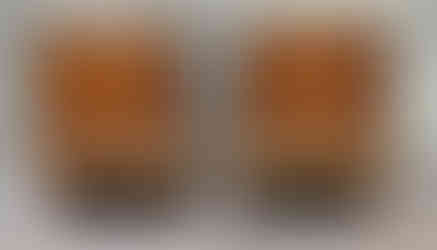




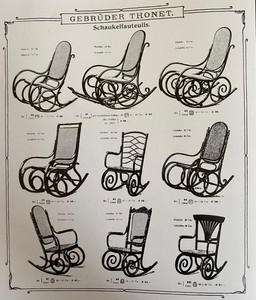









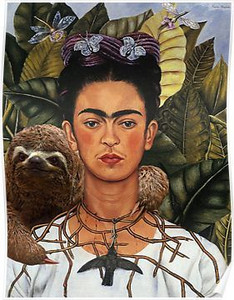































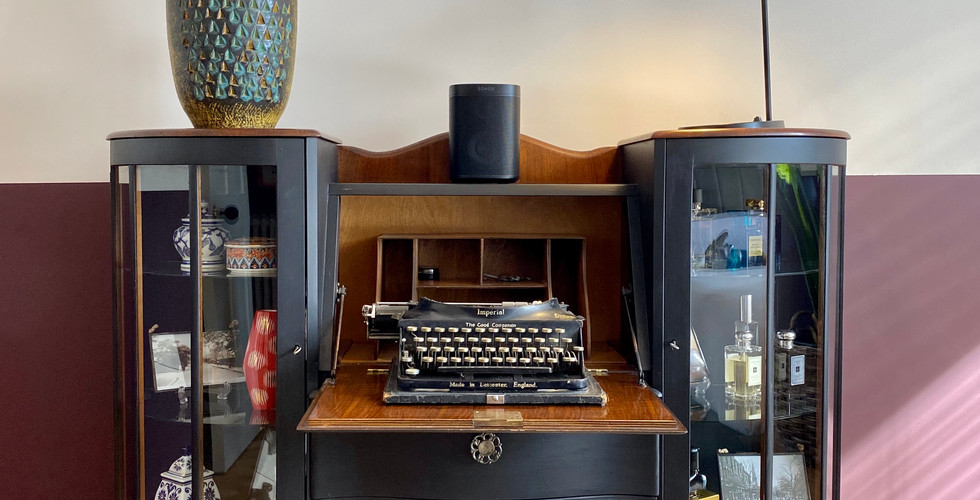







Comments